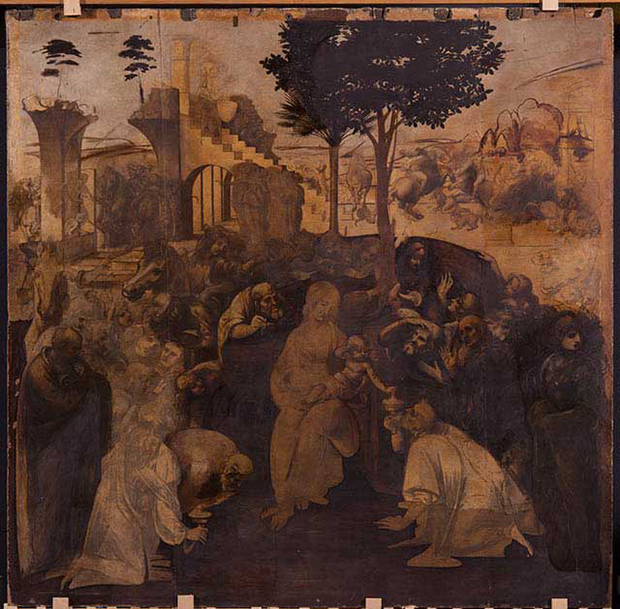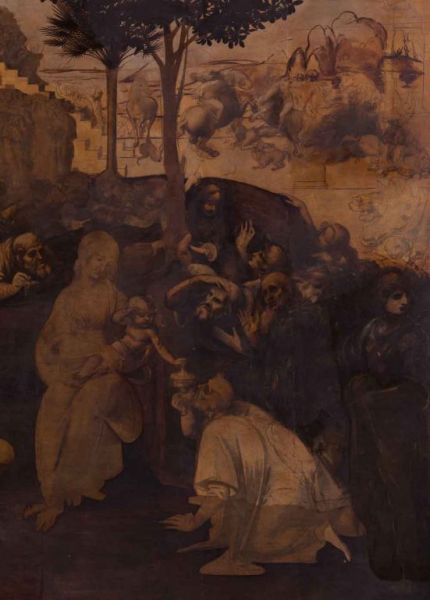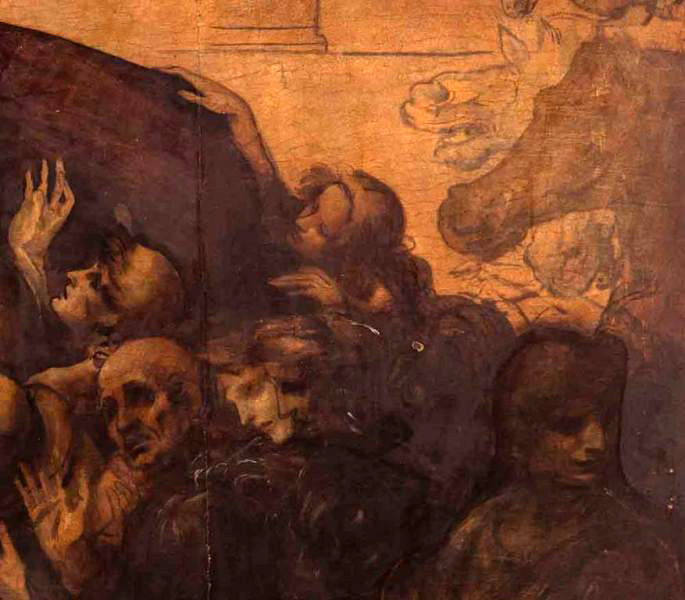
So how do you restore a da Vinci masterpiece?
The Uffizi uses an entire wing of medical imaging gear, a wealth of knowledge - and no small amount of tact
“In July 1481 Leonardo made a contract with the monks of San Donato, near Florence, to paint a panel for the high altar,” writes professor of art history Patricia Emison in our Colour Library title Leonardo. The work, The Adoration of the Magi (1481-2) depicts the three wise men at Christ’s side, though Leonardo was never able to complete the work, as Lorenzo de' Medici sent the artist to Milan in 1482.
Despite being unfinished, the painting is widely regarded as a masterpiece, thanks in part to its innovative composition and figurative arrangements. Emison explains: ”Leonardo tries to imply time before and time after what he actually draws by pinpointing a moment in the midst of gradual, graceful movement. ‘That figure is most praiseworthy,’ he wrote, ‘which by its action best expresses the emotion in its soul.’ He thereby concisely articulated a new way of thinking about visual art.”

An important painting then, even for Florence’s incredible Uffizi Gallery Museum; yet it is also a work suffering from significant aging and degradation. How should this incomplete fragile oil-on-wood-panel painting be preserved? It shouldn’t, according to the prevailing view at yesterday’s press conference, be made to look as good as new.
“The principle that guides us,” said Mario Ciatti of the Ministry of Cultural Heritage in Florence in annoucing their recent work on the painting, “is that the clean-up must not set itself the goal to return the painting as it was from new, a very dangerous and improvable claim since no one knows exactly how it appeared and it can lead to irreparable damage, but the most reasonable to allow a correct interpretation of its meanings and expressive values, albeit with signs of the passage of time.”
With these principles in mind, Ciatti and co have wheeled-in a wide array of imaging devices to determine what is the work of da Vinci’s hand and what has been added afterwards.

As is now common in these instances, x-ray analysis was carried out. The painting was also examined using infrared reflectography, which can reveal greater, under-the-surface details. Infrared spectroscopy, a sort of infrared ‘x-ray’ was also employed; this enabled the University of Perugia's chemistry’s professors Bruno G. Brunetti, Alessia Daveri, Costanza Miliani and Francesca Rosi, to gain a greater understanding of the molecular make of of parts of the painting. They also used Optical Coherence Tomography, a type of highly detailed, light-based imaging more commonly used in medical circles, that allows practitioners – in his case Piotr Tarkovsky, Magdalena Iwanicka and Bogumia J. Rouba from the Kepler University of Tallinn in Poland – to get a detailed picture of what lies just below the work's dark surface.
So, how did this all help? Well, they were able to detect layers added after the artist stopped painting the panel, both intentionally and unintentionally, and ascertained how best to revive certain portions. Workers depicted on the pagan temple behind Christ can now be seen with the naked eye, rather than just infrared instruments. The mysterious battle taking place in the panel’s upper-right corner is clearer also.

Perhaps most importantly, the restorers have been able to pick out initial sketches made for elements such as the horses heads, which appear in various positions, indicating, presumably, that the artist had not yet decided which position best expresses that beat’s “emotion in its soul,” before he abandoned the work.

See for yourself next summer at the Uffizi when, after further work, the painting is due to go back on display. And for a richer understanding of this and other works buy our Leonardo book, here.